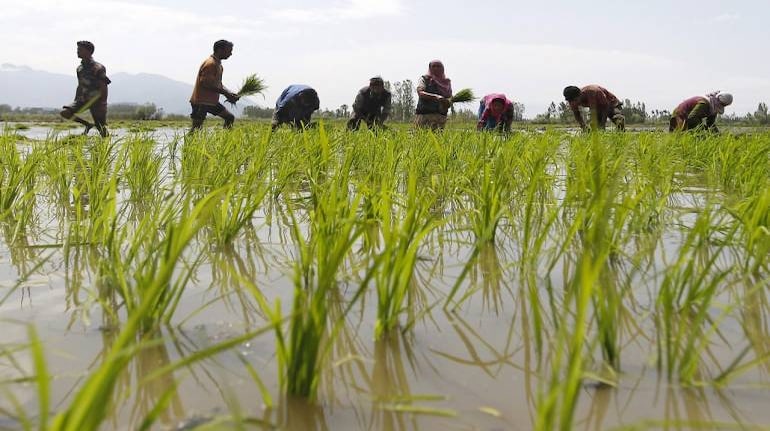



With a focus on securing more investments and expertise from private players in the agriculture sector, the government is keen to create a formal comprehensive framework for public private partnership (PPP) for the sector.
Agriculture Secretary Manoj Sinha told an event organised by the industry body Ficci that work on the framework was ongoing and private players were encouraged to share their inputs.
Sinha said it was crucial to have a framework that enabled more private players to easily enter the sector for scaling up central initiatives such as the push to reduce losses in the value chain for agri commodities.
He also stressed that despite best efforts by the government, a lack of synergy remains with regard to the requirements of farmers, companies, and the government. "There are a large number of players in every sub-sector of India's agriculture. But there is a need for coordination," Sinha said.
Referring to the recent domestic shortage of raw cotton, Sinha said the textile industry had suggested farming of high-density cotton crops but a framework was needed to bring the industry and farmers on the same platform.
Making way for private sector
The government's move to formally rope in more companies into the sector comes six months after the three controversial farm laws were repealed by the Centre under popular pressure. One of the laws provided a legal framework for farmers to enter into pre-arranged contracts with private buyers including mention of pricing.
This had given rise to pushback against the growing corporatisation of the agri value chain. However, officials present at Tuesday's event stressed that growing synergy with the private sector remains a key focus.
Arguing that the need for having more PPAs in agriculture was evident, Samuel Praveen Kumar, Joint Secretary to the Department of Agriculture and Farmers Welfare, said the government wanted to partner with industry to create a PPP model which would not only be replicable and upscalable but also highly viable on a sustainable basis.
He said 70 percent of projects under the central agri infrastructure schemes in the last two years were in the PPP model.
Kumar stressed the move would help reduce risks, ensure greater accountability, provide complementarity of competencies between the private and public sectors, help in the pooling of resources and make last-mile deliveries possible.
"Post-harvest losses are as much as 15-20 percent of yield for agri products, while it is as high as 30-40 percent of yield for horticultural products. We have new technologies such as ICT, blockchain being brought into the sector by private players. This needs to be stepped up," he said.
No Shortage of Rice
Official sources present at the event also stressed that the government was currently not worried over the rice output in the ongoing season as the abundant monsoon is expected to yield a good harvest later in the year.
Monsoon rainfall is crucial for the Kharif season when 84 percent of the crop is grown. Kharif sowing is done in June-July and harvests take place in November-December. A lot is riding on the upcoming rice harvest in the country after the government had to restrict wheat exports due to threats of a domestic shortage.
Officials from the Commerce Department and other Ministries had told Moneycontrol earlier this that the government is still considering whether to ban shipments of rice after global demand had shot up especially in nations that use both wheat and rice as staples.
India is the second-largest producer of milled rice after China. It is the largest shipper of rice globally, sending out 35.8 percent of global rice exports, according to the Observatory of Economic Complexity (OEC), an online data visualization and distribution platform.
Discover the latest Business News, Sensex, and Nifty updates. Obtain Personal Finance insights, tax queries, and expert opinions on Moneycontrol or download the Moneycontrol App to stay updated!
Find the best of Al News in one place, specially curated for you every weekend.
Stay on top of the latest tech trends and biggest startup news.